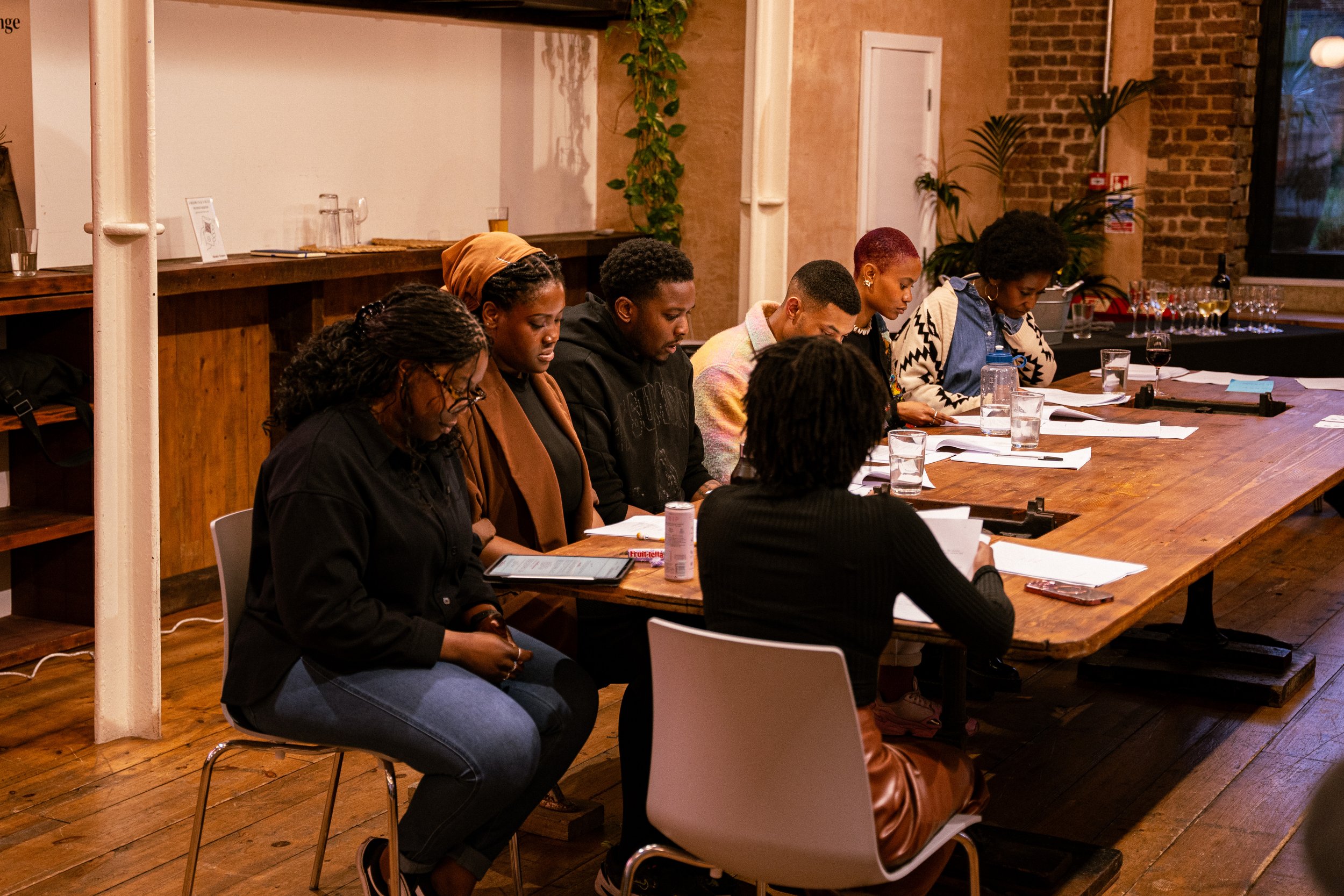Development:
Writing the Story
You may have questions about how to format a particular scene, parentheticals, pieces of dialogue, character introductions, action scenes, flashbacks, etc. The writing process differs for everyone, but the “traditional” path often includes some kind of story development.
In general, however, decide whether the story you want to tell is a feature film, a short film, a one-hour drama pilot, or a half-hour comedy pilot. Each of these has specific needs that you must meet.
Typically, a TV show idea has a repeatable premise that can generate stories week after week (the 'engine')—such as cops investigating crimes, lawyers defending their clients, or doctors healing patients (these are called procedurals). If your idea is a more encapsulated story, perhaps a single narrative, it's probably a feature film. It might be a short film if it's more of a moment.

Where to start:
-
Stories start with characters, so decide who your leads are, what their stage of life is, and most importantly, what they want (i.e., their goals). The story flows from character goals, so it's important to figure out these goals before you start writing.
Character development resources can be found here
-
Structure is a way of talking about how and when you move from each important story moment to the next. Each format has its own structural beats. Some common structures are outlined here and here.
Dan Harmon, creator of Community, developed the story circle, which is widely applicable to TV and film. It's another common way of thinking about structure.
TV has its own specific structure depending on whether you're writing a half-hour or an hour, and how many acts you use. Some resources: TV structure - this discusses 1/2-hour and hour scripts. 10 feature screenplay structure types.
-
Map your story to the main structural beats of the screenplay. This involves figuring out what happens at your inciting incident, at the first act break, at the low point/all-is-lost moment, at the climax, and so on. It can be in bullet point form, but once you know these beats, you can start writing the outline. In TV, you'll need to break the A, B, and C stories. From the subreddit: How do you turn a vague idea into a complete and coherent plot?
Resources from Screencraft, Go Into The Story and more.
See Vince Gilligan's approach for an overview. More info for TV writers here.
Showrunner Matthew Federman has advice on breaking stories here and here.
-
There’s no single “right” way to write an outline—unless you’re submitting it to a studio or network, in which case their guidelines will dictate the format. At this stage, your outline is primarily for you. It’s a tool to keep you on track with your story and ensure you’re covering all the necessary points. Making changes is much easier when your story exists in outline form, rather than after you’ve written 40, 60, or 100 pages of script. While it’s important to aim for clarity and structure in your outline, don’t be afraid to deviate from it when you start writing.
Some showrunners and writers' workshops have adopted a beat sheet—a more intensive, zoomed-in version of the outline. This breaks the story into detailed beats, offering an even deeper roadmap. While it’s not a requirement, it can be a useful tool for those who prefer a more granular approach to story planning. Whether you use a traditional outline or a beat sheet depends on your workflow and creative preferences.
Outline/treatment examples from John August and Screencraft
More on writing an outline from NoFilmSchool, Screencraft.
Sitcom outlines specifically here.
-
Once you have an outline, you may feel ready to write your first draft.
Advice on the first 10 pages from showrunner Matthew Federman
Resources:
-
Inclusive Screenwriting for Film and Television by Jess King
Nicholl Fellowship formatting sample -- An extremely useful sample script to use as a guide for formatting. Please also see the Nicholl page on Formatting for common / beginner mistakes to avoid.
-
Scriptnotes -- one of the oldest and most comprehensive screenwriting podcasts out there. Hosted by working screenwriters John August (Big Fish, Aladdin etc) and Craig Mazin (Chernobyl).
Paper Team (content is up to date only to 2021) -- TV-focused podcast on the business and practical aspects of it.
Children of Tendu -- TV focused podcast hosted by long-time TV writers Javier Grillo-Marxuach and Jose Molina.
3rd and Fairfax -- the Writers Guild of America podcast.
The Business -- KCRW podcast. Not specifically screenwriting-focused, but very focused on the business of making tv and film.
The Treatment -- another KCRW podcast featuring interviews with influential people in art and entertainment.
The Writer's Panel -- from professional TV writer and Nerdist host Ben Blacker.
-
Scriptreaderpro: 50 best screenplays to read
Dropbox - WGA 100 greatest scripts.
-
TV Writing Google Site - Great resource with many on- and off-air show scripts (not just pilots) as well as pitch documents and bibles.
TV Calling -- TV scripts, pitches, outlines and bibles.
2020 pilots -- site for 2020 TV pilots.
Bitter Script Reader - spec database -- This is a compilation of links to spec episodes written in the past by now-successful writers.
-
Search this subreddit
Google: script name + script + pdf. ( e.g. “Star Wars script pdf”).
-
-
-
Free & Paid Versions
Highland -- Mac only | search results
KIT Scenarist -- free and open source. | search results
Trelby -- free and open source. | search results
$ Subscription
WriterDuet -- first three scripts free | search results
Arc Studio Pro -- two-script free version, plans from $69/year. | search results
Flat fee
FadeIn -- $79, free trial avail | search results
Final Draft -- $249, student discount avail, 30-day free trial avail. Mobile app avail ($10)